Textbooks are more than mere information repositories; they are conduits of knowledge that shape how we perceive the world, challenge our intellect, and inspire critical thinking. Certain tomes stand as pillars in the vast landscape of written wisdom, influencing generations across diverse domains. This journey takes us through the corridors of time and knowledge, unraveling the narratives woven by the most influential textbooks across various disciplines.
Most Influential Books
Foundational Texts in Philosophy and Thought
1. Plato’s “The Republic”
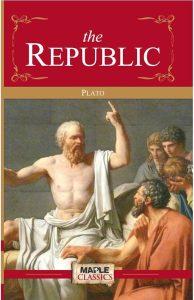
- Author: Plato
- Year of Publishing: Estimated 380 BCE
Our expedition begins with Plato’s magnum opus, “The Republic.” Written as a dialogue, this philosophical masterpiece explores justice, morality, and the nature of the ideal state. Through the allegory of the cave and the concept of the philosopher-king, Plato lays the groundwork for Western political philosophy and utopian thinking. “The Republic” resonates with scholars, politicians, and thinkers, fostering contemplation on the essence of governance and the pursuit of a just society.
2. Aristotle’s “Nicomachean Ethics”
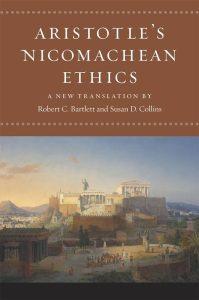
- Author: Aristotle
- Year of Publishing: Estimated 350 BCE
Continuing the philosophical odyssey, we encounter Aristotle’s “Nicomachean Ethics.” In this seminal work, Aristotle delves into the nature of human virtue and moral character. Exploring the concept of eudaimonia (flourishing or living well), Aristotle articulates the ethics of virtue and the importance of balance in life. His classification of virtues as mean states between extremes remains a cornerstone in ethical philosophy, guiding discussions on personal conduct and moral reasoning.
3. Immanuel Kant’s “Critique of Pure Reason”

- Author: Immanuel Kant
- Year of Publishing: 1781
Transitioning to the Enlightenment era, we encounter Immanuel Kant’s “Critique of Pure Reason.” Kant, a luminary in modern philosophy, grapples with epistemology and metaphysics, seeking to reconcile empirical knowledge with a priori concepts. By introducing the idea of transcendental idealism, Kant revolutionized philosophical thought, questioning the limits of human cognition and the nature of reality. “Critique of Pure Reason” remains a formidable text, influencing subsequent philosophical inquiries and challenging the foundations of knowledge.
As we navigate through these foundational philosophical texts, it becomes evident that these works transcend temporal boundaries, inviting readers to engage in timeless conversations about the fundamental nature of existence, morality, and the pursuit of knowledge. The philosophical wisdom embedded in these texts serves as a beacon, guiding intellectual explorations and fostering a deeper understanding of the human experience.
Revolutionary Scientific Texts
1. Isaac Newton’s “Principia Mathematica”
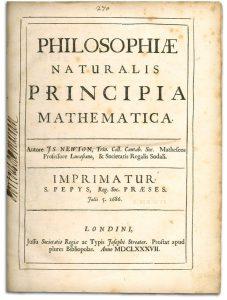
- Author: Sir Isaac Newton
- Year of Publishing: 1687
Venturing into the realm of science, our exploration begins with Sir Isaac Newton’s “Principia Mathematica.” Published in 1687, this seminal work lays the groundwork for classical mechanics and the laws of motion. Newton’s mathematical formulations revolutionize physics, providing a systematic framework to understand the fundamental principles governing celestial bodies’ motion and terrestrial objects’ motion. “Principia Mathematica” is a cornerstone of scientific inquiry, heralding the age of Enlightenment and influencing generations of physicists and mathematicians.
2. Charles Darwin’s “On the Origin of Species”
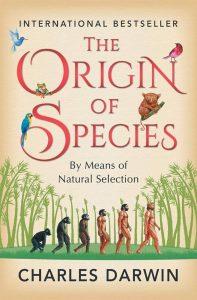
- Author: Charles Darwin
- Year of Publishing: 1859
The evolutionary journey of influential textbooks takes a pivotal turn with Charles Darwin’s “On the Origin of Species.” Published in 1859, this groundbreaking work introduces the theory of natural selection, challenging prevailing beliefs about the origin and diversity of species. Darwin’s meticulous observations and compelling arguments set the stage for the paradigm shift in biology, sparking debates that continue to resonate in discussions about evolution, adaptation, and the interconnectedness of all living organisms.
3. Albert Einstein’s “The Theory of Relativity”

- Author: Albert Einstein
- Year of Publishing: 1915
In the early 20th century, Albert Einstein’s “The Theory of Relativity” reshapes our understanding of space, time, and gravity. Comprising two monumental theories—special relativity and general relativity—Einstein’s work fundamentally alters the fabric of physics. The equation E=mc^2 becomes an emblem of scientific ingenuity, illustrating the equivalence of mass and energy. “The Theory of Relativity” not only transforms the field of physics but also captivates the public imagination, demonstrating the profound interplay between theoretical physics and the broader human experience.
Literary Masterpieces and Language Studies
1. William Shakespeare’s “Hamlet”
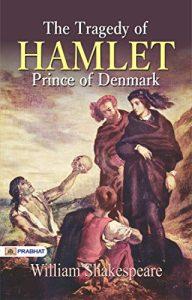
- Author: William Shakespeare
- Year of Publishing: Estimated 1603
Transitioning from scientific revolutions to literary milestones, we encounter William Shakespeare’s timeless tragedy, “Hamlet.” Shakespeare’s exploration of existential themes, moral dilemmas, and the complexities of human nature transcends centuries. “Hamlet” remains a literary touchstone, offering profound insights into the human psyche, power dynamics, and the consequences of indecision. The Bard’s linguistic prowess and narrative depth continue to captivate readers, cementing “Hamlet” as a foundational work in the canon of English literature.
2. George Orwell’s “1984”
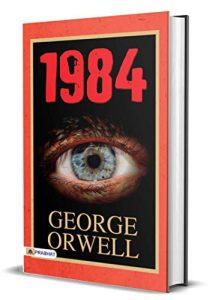
- Author: George Orwell
- Year of Publishing: 1949
Exploring influential literary works extends to the dystopian realm with George Orwell’s “1984.” Published in 1949, Orwell’s cautionary tale about totalitarianism, surveillance, and the manipulation of truth remains eerily prescient. “1984” not only serves as a chilling reflection on political power but also becomes a cultural touchstone, inspiring discussions about individual autonomy, freedom, and the role of government in shaping society.
3. Strunkand White’s “The Elements of Style”
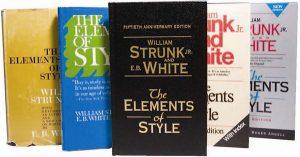
- Authors: William Strunk Jr. and E.B. White
- Year of Publishing: 1919 (original), 1959 (revised by White)
Shifting gears to language studies, we encounter “The Elements of Style” by William Strunk Jr. and E.B. White. Originally penned by Strunk and later revised by White, this slim yet influential guidebook has become a beacon for writers seeking clarity and precision in their prose. From the famous dictum “Omit needless words” to the emphasis on active voice, “The Elements of Style” offers timeless principles for effective communication, making it an indispensable companion for writers across disciplines.
As we traverse the diverse landscapes of scientific inquiry and literary exploration, these influential textbooks underscore the enduring impact of human creativity and intellectual curiosity. The journey continues as we delve into economic and political thought, psychology, and the medical sciences in the subsequent sections.
Economic and Political Thought
1. Adam Smith’s “The Wealth of Nations”
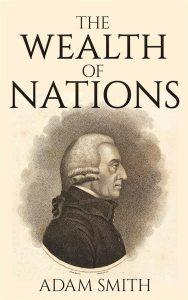
- Author: Adam Smith
- Year of Publishing: 1776
Our expedition into the intellectual archives of economic thought begins with Adam Smith’s seminal work, “The Wealth of Nations.” Published in 1776, this foundational text lays the groundwork for classical economics. Smith’s exploration of the invisible hand, division of labor, and free-market principles significantly influences economic philosophies, shaping discussions on capitalism, wealth creation, and the role of government in economic affairs. “The Wealth of Nations” remains a touchstone for economists and policymakers, fostering debates on economic systems and market dynamics.
2. Karl Marx and Friedrich Engels’ “The Communist Manifesto”
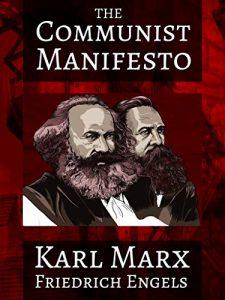
- Authors: Karl Marx and Friedrich Engels
- Year of Publishing: 1848
In the mid-19th century, Karl Marx and Friedrich Engels penned a manifesto that would reverberate through the corridors of political thought: “The Communist Manifesto.” Advocating for the overthrow of capitalist systems and the establishment of a classless society, Marx and Engels catalyzed revolutionary ideologies. Despite diverse interpretations and critiques, “The Communist Manifesto” remains a foundational text in political theory, sparking debates on class struggle, social justice, and the role of the state.
3. John Maynard Keynes’ “The General Theory of Employment, Interest, and Money”
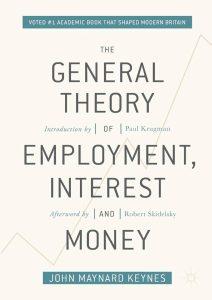
- Author: John Maynard Keynes
- Year of Publishing: 1936
The 20th century ushered in new economic paradigms, and at its forefront was John Maynard Keynes with “The General Theory of Employment, Interest, and Money.” Published in 1936, Keynesian economics challenged classical notions, proposing that government intervention could mitigate economic downturns. Keynes’ ideas became central to post-World War II economic policies, influencing fiscal and monetary strategies and shaping the discourse on economic stability and growth.
Psychology and Human Behavior
1. Sigmund Freud’s “The Interpretation of Dreams”
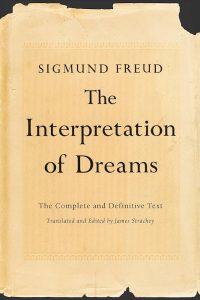
- Author: Sigmund Freud
- Year of Publishing: 1899
Our exploration of influential textbooks ventures into the realm of psychology with Sigmund Freud’s “The Interpretation of Dreams.” Published in 1899, Freud’s exploration of the unconscious mind and dream analysis became foundational to psychoanalysis. “The Interpretation of Dreams” introduced concepts such as the id, ego, and superego, shaping psychological discourse on human behavior, motivation, and the intricacies of the human psyche.
2. B.F. Skinner’s “Walden Two”
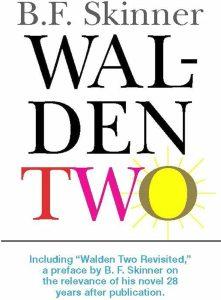
- Author: B.F. Skinner
- Year of Publishing: 1948
In the mid-20th century, B.F. Skinner’s utopian novel “Walden Two” delves into behavioral psychology and the possibilities of societal engineering. Skinner’s exploration of a fictional community governed by behaviorist principles challenges conventional notions of human autonomy and societal structure. “Walden Two” stimulates discussions on the ethical implications of behavioral science and the potential for intentional community design based on psychological principles.
3. Daniel Kahneman’s “Thinking, Fast and Slow”
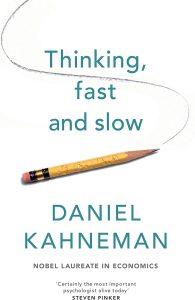
- Author: Daniel Kahneman
- Year of Publishing: 2011
Stepping into the contemporary psychology landscape, Daniel Kahneman’s “Thinking, Fast and Slow” presents a nuanced exploration of human cognition. Published in 2011, this influential work delves into the dual systems of thinking—System 1, fast and intuitive, and System 2, slow and deliberate. Kahneman’s insights into cognitive biases, decision-making, and heuristics have profound implications for fields ranging from economics to public policy, reshaping our understanding of human behavior.
As we navigate the realms of economic and political thought, psychology, and human behavior, these influential textbooks unveil the evolution of ideas that have shaped societies, challenged established norms, and expanded our understanding of the human experience. The exploration continues with a medical and health sciences journey in the next section.
Medical and Health Sciences
1. William Harvey’s “On the Motion of the Heart and Blood”
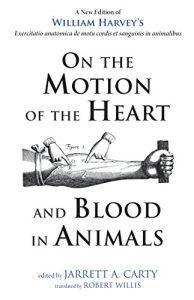
- Author: William Harvey
- Year of Publishing: 1628
Our journey into the medical sciences begins with William Harvey’s groundbreaking work, “On the Motion of the Heart and Blood.” Published in 1628, Harvey’s meticulous observations and experiments fundamentally altered the understanding of blood circulation. By elucidating the circulatory system, Harvey laid the foundation for modern physiology and challenged prevailing notions about blood movement in the human body. His work became a cornerstone in medical education and paved the way for advancements in cardiovascular medicine.
2. Florence Nightingale’s “Notes on Nursing”
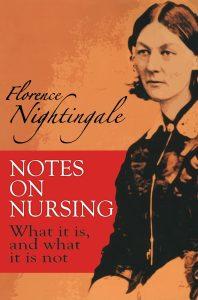
- Author: Florence Nightingale
- Year of Publishing: 1860
Transitioning to nursing and healthcare, we encounter Florence Nightingale’s “Notes on Nursing.” Published in 1860, Nightingale’s work revolutionized the field of nursing, emphasizing hygiene, patient care, and the importance of a healing environment. Her emphasis on evidence-based practices and compassionate care elevated nursing to a respected profession, leaving an indelible mark on healthcare practices that endure today.
3. Paul Farmer’s “Mountains Beyond Mountains”
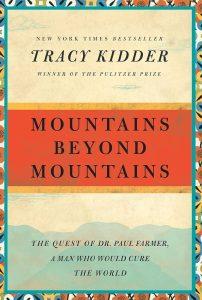
- Author: Paul Farmer
- Year of Publishing: 2003
In the modern era of global health, Paul Farmer’s “Mountains Beyond Mountains” stands as a testament to the intersection of medicine and social justice. This biographical work explores Farmer’s journey as a physician and anthropologist, detailing his efforts to provide healthcare to impoverished communities in Haiti and beyond. Farmer’s advocacy for equitable healthcare and his work with Partners In Health inspire discussions on the ethical responsibilities of healthcare professionals and the pursuit of health as a human right.
Computer Science and Information Technology
1. Donald Knuth’s “The Art of Computer Programming”
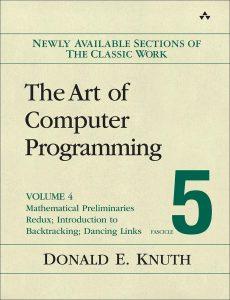
- Author: Donald Knuth
- Year of Publishing: 1968 (multiple volumes)
Our exploration of influential textbooks in technology begins with Donald Knuth’s monumental work, “The Art of Computer Programming.” Published in multiple volumes starting in 1968, Knuth’s magnum opus sets the standard for computer science literature. It covers algorithms, data structures, and the mathematical foundations of computer science, providing a comprehensive and timeless resource for programmers and computer scientists.
2. Tim Berners-Lee’s “Weaving the Web”
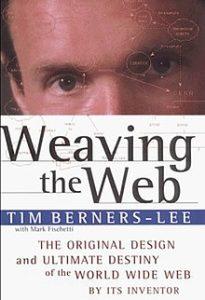
- Author: Tim Berners-Lee
- Year of Publishing: 1999
In the early days of the Internet, Tim Berners-Lee, the inventor of the World Wide Web, penned “Weaving the Web.” Published in 1999, this influential work provides insights into the creation and development of the web. Berners-Lee explores the philosophy behind the web’s design, its potential impact on society, and the importance of an open and accessible internet. “Weaving the Web” remains a foundational text for understanding the origins and principles that underpin the modern digital landscape.
3. Martin Fowler’s “Refactoring: Improving the Design of Existing Code”

- Author: Martin Fowler
- Year of Publishing: 1999
In the dynamic field of software development, Martin Fowler’s “Refactoring” has become a seminal work. Published in 1999, this book introduces the concept of code refactoring—restructuring existing computer code without changing its external behavior. Fowler’s insights on improving code maintainability, readability, and efficiency have profoundly impacted software development practices, influencing how developers approach the enhancement and evolution of software systems.
Environmental Studies and Sustainability
1. Rachel Carson’s “Silent Spring”
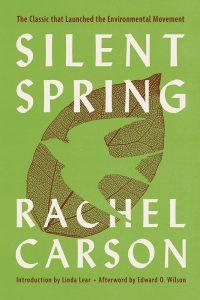
- Author: Rachel Carson
- Year of Publishing: 1962
Our exploration of influential textbooks turns toward environmental consciousness with Rachel Carson’s “Silent Spring.” Published in 1962, Carson’s work catalyzes the modern environmental movement. Through meticulous research and compelling prose, she exposes the detrimental effects of pesticides, particularly DDT, on the environment and wildlife. “Silent Spring” not only led to significant policy changes, including the ban on DDT but also sparked a broader awareness of the interdependence between human activities and the natural world.
2. E.F. Schumacher’s “Small Is Beautiful”
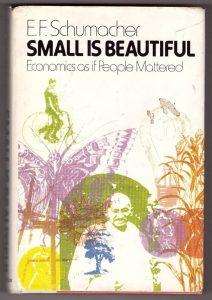
- Author: E.F. Schumacher
- Year of Publishing: 1973
Continuing the discourse on environmental sustainability, E.F. Schumacher’s “Small Is Beautiful” challenges prevailing notions of economic growth. Published in 1973, Schumacher advocates for a holistic approach to economics, emphasizing the importance of human-scale, decentralized technologies and sustainable development. His ideas on appropriate technology and ecological stewardship have influenced movements advocating for environmentally conscious and socially responsible economic practices.
3. Bill McKibben’s “The End of Nature”

- Author: Bill McKibben
- Year of Publishing: 1989
In the late 20th century, Bill McKibben’s “The End of Nature” emerged as a seminal work on climate change. Published in 1989, McKibben explores the concept of climate change and its profound implications for the planet. The book not only serves as an early warning about the impacts of human activities on the climate but also catalyzes public discourse on environmental conservation and the need for global action to address climate change.
As we traverse the realms of medical and health sciences, computer science, and environmental studies, these influential textbooks illuminate the path of discovery and innovation that has transformed healthcare, technology, and our understanding of the natural world. The journey continues with a dive into educational pedagogy and learning theories in the next section.
Educational Pedagogy and Learning Theories
1. John Dewey’s “Experience and Education”
- Author: John Dewey
- Year of Publishing: 1938
Our exploration of influential textbooks in education commences with John Dewey’s “Experience and Education.” Published in 1938, Dewey’s work advocates for a progressive and experiential approach to education. By emphasizing the importance of learning through direct experience, Dewey challenges traditional educational methods and calls for a curriculum that aligns with the natural inclinations of learners. “Experience and Education” remains a foundational text in the philosophy of education, influencing educators and educational theorists alike.
2. Lev Vygotsky’s “Thought and Language”
- Author: Lev Vygotsky
- Year of Publishing: 1934 (originally in Russian), English translations available later
Delving into cognitive development, Lev Vygotsky’s “Thought and Language” stands as a landmark text. Originally published in 1934 and later translated into English, Vygotsky’s work explores the relationship between thought and language development in children. His sociocultural theory, emphasizing the role of social interactions in cognitive growth, has profoundly impacted educational psychology and pedagogical practices, shaping our understanding of how children learn and develop.
3. Howard Gardner’s “Frames of Mind: The Theory of Multiple Intelligences”
- Author: Howard Gardner
- Year of Publishing: 1983
In the late 20th century, Howard Gardner’s “Frames of Mind” revolutionized conventional notions of intelligence. Published in 1983, Gardner introduces the theory of multiple intelligences, positing that human intelligence is not a singular entity but a diverse set of abilities. Gardner’s framework has significantly influenced educational approaches, from linguistic and logical-mathematical intelligence to spatial and bodily-kinesthetic intelligence, encouraging a broader understanding of intelligence and diverse learning styles.
In exploring influential textbooks, we’ve traversed the realms of philosophy, science, literature, economics, psychology, medicine, technology, and environmental studies. These texts, authored by thinkers across centuries, continue to shape our understanding of the world and inspire future generations. Each work is a testament to the power of ideas, knowledge, and the enduring impact of intellectual inquiry. As we conclude this journey, we recognize that exploring influential texts is an ongoing endeavor, with new voices and perspectives continuously contributing to the rich tapestry of human thought and understanding.
I’m glad you’re enjoying the exploration of influential texts! As we continue our journey, let’s dive into the final section, focusing on sociology, communication studies, and cultural studies.
Sociology
1. Emile Durkheim’s “The Division of Labor in Society”
- Author: Emile Durkheim
- Year of Publishing: 1893
Our exploration of influential textbooks in sociology begins with Emile Durkheim’s “The Division of Labor in Society.” Published in 1893, Durkheim’s work laid the foundation for the field of sociology. He examines societal structure changes and labor division, emphasizing the importance of social solidarity. Durkheim’s theories on functionalism and the role of institutions in maintaining social order remain pivotal in sociological studies.
2. Max Weber’s “The Protestant Ethic and the Spirit of Capitalism”
- Author: Max Weber
- Year of Publishing: 1905
Continuing our sociological journey, Max Weber’s “The Protestant Ethic and the Spirit of Capitalism” explores the relationship between Protestantism and the development of capitalism. Published in 1905, Weber examines the impact of religious beliefs on economic systems, contributing to the understanding of the sociocultural factors influencing the evolution of societies.
3. W.E.B. Du Bois’ “The Souls of Black Folk”
- Author: W.E.B. Du Bois
- Year of Publishing: 1903
Addressing issues of race and identity, W.E.B. Du Bois’ “The Souls of Black Folk” is a seminal work in sociology. Published in 1903, Du Bois combines essays and data analysis to explore the experiences of African Americans in the post-Civil War United States. His concept of “double consciousness” remains influential in discussions on race and identity.
Communication Studies
1. Marshall McLuhan’s “Understanding Media: The Extensions of Man”
- Author: Marshall McLuhan
- Year of Publishing: 1964
Marshall McLuhan’s “Understanding Media” is a groundbreaking work in communication studies. Published in 1964, McLuhan introduces the famous phrase “the medium is the message,” emphasizing the impact of communication technologies on society. His exploration of how media shapes human perception and interaction remains relevant in the digital age.
2. Erving Goffman’s “The Presentation of Self in Everyday Life”
- Author: Erving Goffman
- Year of Publishing: 1956
Erving Goffman’s “The Presentation of Self in Everyday Life” delves into the dramaturgical nature of social interaction. Published in 1956, Goffman introduces the concept of “dramaturgy,” viewing social life as a theatrical performance. His insights on impression management and face-to-face interactions are foundational in understanding symbolic interactionism.
Cultural Studies
1. Stuart Hall’s “Encoding and Decoding in the Television Discourse”
- Author: Stuart Hall
- Year of Publishing: 1973
Stuart Hall’s work in cultural studies, particularly “Encoding and Decoding in the Television Discourse,” is influential in understanding how media messages are produced and interpreted. Published in 1973, Hall introduces the concept of encoding (production) and decoding (interpretation) of messages, emphasizing the role of audiences in creating meaning.
2. Edward Said’s “Orientalism”
- Author: Edward Said
- Year of Publishing: 1978
Edward Said’s “Orientalism” critically examines Western representations of the Middle East. Published in 1978, Said explores how cultural stereotypes and biases influence academic and artistic depictions of the “Orient.” His work has had a profound impact on postcolonial studies and cultural criticism.
Conclusion
As we conclude our exploration of influential textbooks, we’ve traversed a vast intellectual landscape. From philosophy to technology, sociology to communication studies, each work has left an indelible mark on its respective field. The enduring relevance of these texts lies in their ability to provoke thought, challenge assumptions, and inspire future generations. The intellectual journey is an ongoing process, and these textbooks continue to shape how we perceive and engage with the world. Pursuing knowledge and exploring diverse ideas are perpetual sources of inspiration and understanding.
People are also reading:

